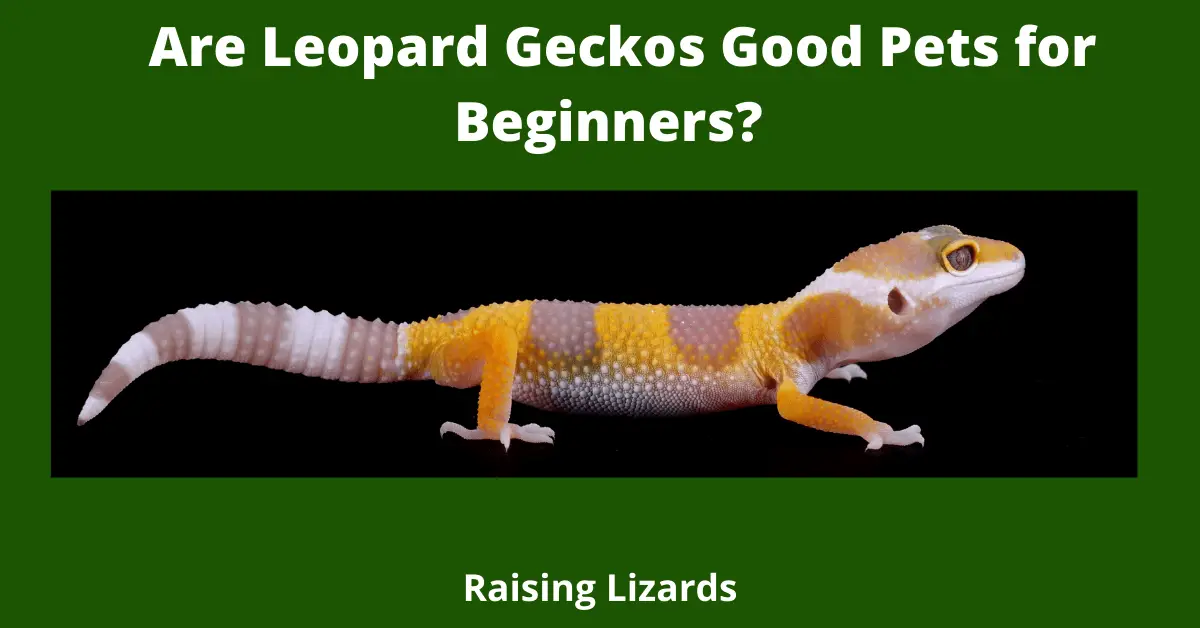Interesting Facts About Leopard Geckos
Gecko’s are web Footed Lizards. They have Skin betwqeen their toes. It Allows them to scurry acrosss sand and other landscapes.
- Word Gecko Comes from Malaysian Word – Barking Sounds
- Gecko Family ( Gekkonidae ), over 950 Members divided into 5 sub classes.
- Onlt Lizard able to vocalize
- Geckos are Carnavorous
- The Smallest Gecko ( 1/2″ ) Long , Grupo Jaragua in Dominican Republic
- They are Found India, New Caledonia, Asia, And the Middle East.The Love in Rainforest Habitats
- In Nature Gecko’s Predators are Rodents, Birds and Snakes, Weasels, Rats, Oppossums, Spiders, hunt Gecko’s
- Gecko’s can drop their tails in order to escapeThe Gecko is very fast / when converted to human size & speed it would be close to 81MPH
- They also use trheir tails as balance as they run.
Gecko’s Families
- Eublepharidae – The Eyelid Gecko’s
- Gekkonidae – Typical Gecko’s
- Dibamidae – The Dibamid Lizards
- Xantusiidae – The Night Lizards
- Pygopodidae – Australian and New Guinean Footless Lizards
Gecko’s Physical Characteristics
They have a the ability to camoflague thewmselves. If they loose theire tails trying to escape. Their seperated tail will continue to twitch and move. Distracts the predator giving the Gecko tine to escape. Some Gecko’s can regrow their tails and others will remain tailess the rest of their lives.
Gecko’s Size
Geckos size can vary from the Smallest being 1?2″ in total lengtgh to 13″ for the larger species.
Gecko’s Eyes
Geckos are cold blooded reptiles ( Ectothermic) Get their heat from thew enviornment. Most of Them are akso noctornal. They like to sleep and rest dsuring the day. They ahve Slipped Pupils to see better in dim light.
Scientist have determined tht Geckos have the ability to differenciate between colors 350 times more sensitive than human eyes.
Being Noctournal They are more active in night. They hunt and mate at night. Day Gecko’s are also diurinal, they are awake in the daylight.
Gecko’s Scales
Frog Eyed Geckos have loose scales that the can shake and sounf like va dangerouse Snake. To scare Predators away.
Gecko’s Ears
Gecko’s lack outside ears, instead they have A Skin Membrane, called the Typpanic Membrane. This covers their ear openings. They have a very powerful and tunes hearing ability. Picking up prey and also predators.
Gecko’s Eyelids (Brilles)
Some Geckos’ can Blink, but the majority have a clear Scalles called Brilles, that they lick yo keep moist.
The Leopard Gecko’ has Eyelids and can Blink

Gecko’s Feet
Gecko’s hace skin stretched between their toes. They are called Tubercles, kind of dry ans scally. They ahve specialized Toe Pads that are named Adhesive Lamellae that help them crawl straight up verticle Walls.
They have 5 Toes, With over 2.8 Million tiny hairs thgat cover each foot.
These Hairs creat Mangetism called Van Der Waals Force. Gefckos cannot fall frrom a surface unless they choose to et go. they hbave to tip thir toes cack to break the magnertic attraction fot them to scurry.
Scientist have done test anf the slippiery or wetter a surface is it is harder for them to keep their grip.
Gecko’s Toes
- Webbed Feet
- Some Soecies Lack Claws
- Have Sub Digital Pads
Gecko’s Vocal Chords
Gecko’s have been called the only lizard that are able to vocalize. They have trwo layers of skin where there vocal chord are located. A Gecko’s chords vibrate as air passes over them. They have been described as chirps, barks, clicks, squeaks and croaking.
The sounds are used to communicate, attract mates, and scare awqy predators.

Gecko’s Teeth
Gecko’s are born with over 100 teeth, they loose their teeth every couple of months. Some gecko’s bits are not very strong, in larger species they have been known to pierce and draw human blood if someone was bitten.
Gecko’s Nose
Geckos have a very developed scent detecting system. Their nostrils are on the very front of their head and have a very developed Jacobson’s organ
It is located on the roof of the geckos, mouth. It sends electrical signals to the Gecko’s Brain.
Gecko’s Tongue
Well Developed tongues, that have small notched forked ends. It is used in many ways.
- Wetting the Gecko’s Eyelids
- Carrying Particle of Scent to the Gecko’s Jacobson Organs.
- Well Developed sense of Taste for tasting their foods
- Gecko’s in Captivity choose the sweetiest of fruits.
- Helps detewrmine the receptability of Mating Partners
Gecko’s Hibernation
Tropical Gecko’s rarely hibernate. Temperatures in their enviornments are warm all year around. In The cooler enviornments they hibernate in cracks in the ground, under rocks, tiny places of safety.
Gecko’s LifeSpan
Gecko’s make Good Pets, having a lifespan up to 210 Years Old. They are Easy to Feed and Take Care of.
Flying Gecko’s
One Species of Geckos’s ahve flaps of skin that allow them to glide throught the air, with like tiny parachutes. Great distances of 200 Feet have been recorded for distance that they have junped and glided.
Gecko’s Mating
Geckos need to be one year old before they mate. The Leopard Gecko needs both male and female to reproduce. Some Geckos speccies can reproduce withiut the opposite sex. Tgese are called Mourning Gecko’s. Thr ability to reproduce without males is calle parthenogenetically. Asexual Reproduction ability.
Most Geckos prefer to live in solitary lifestyle. . Except when the want to mate. The vfemale geckos carry eggs within their bodies. When they need to be fertilized they secrete a scent that attracks the male lizards.
Males will fight over the priveledge to mate, that union taking from 15 seconds up to 15 minutes. The union will producr 1-2 Geckos. Some species carry the eggs inside their bodies until they hatch, other species will have nest and lay the eggs.
For those that use nest, Scientist have determined that the number of males and females that develope. Warmer temperatures in the nest usually result in higher numbers of Males hatching from the eggs.
Depending on the species they may have several clutches a year
The mother will guard her nest for 6-8 weeks. Once Born she is finished and will let the kids fend for themselves. They will hide, be camoflagued, some produce a foul odor to protect themselves.
Gecko’s Behavior in Capativity
- Females Can Co Exisist
- Males Are Territorial
- Couple can live together
- Antoginism – Head Bobbing
- Courtship – Head Bobbing
- Tail Wagging Nervous
Housing
Natural Habitats include Grasslands, Mountain Ranges, Deserts and Rain Forest.
4 Types Terrariums
Desert Terrariums
Many Geckos are desert dwellers,. This typ of cage replicates their natural desert habitat. Rocks, Sand,
- Sand as substrate – – smooth Desert Sand is best
- Rocks Ledges
- Caves
- Basking Rocks
- Airrid Plants
- Top Screen
Savanna Terrarium
These are Areas of Land that Transition from Edge of the Forestland, Edge of woodland, Edges of Desert.
- Rolling Grasslands
- Moderate Rainfall
- Aeras of Rocks
- Substrate of sandy humus, variably sized rocks
- Seathered Brances
- Avaiability for Gecko Digging
- Water Avaiability
- Top can be Screen
Woodlands / Forest Terrariums
These pattern tropical enviornments, rainy climates
- Woodland Plants
- Attractive Branches
- Light needs to be provided for plant growth
- Substrate of Pea Gravel, 2-3 ” of soil.
- Glass or Plastic Top to keep in Humidity
Food
Gecko’s in the wild feast on these natural foods
- Young Scorpions
- Small Lizards
- Moss
- Rotting Fruit
- They use their jaws to swing their prey against the ground to immobolize them.
Capptive pet Geckos’s have a more limited diet than their wild cousins. Their diets will need to be watched and varied to be able to get the nutrition they need .
- Crickets
- Mealworms
- Wax Worms
- Pinky Mice
- Baby Mice
Watering Techniques
- Water Dishes – some species will lap water
- Misting – Not all uses water dishes.these species lap dew and moisture off of leaves – Gently misting will provide that water for your geckos
- Hydration Chamber – – descriptive of using a rain chamber – can be very helpful to a dehydrated Gecko
Supplementing the Diet
- Vitamin
- Mineral Supplements
- Gut – Loading
proper feeding you gecko can live 20+ Years, Oldest Recorded Gecko lived for 30 years. - Insects can be dusted with vitamins and minerals to make sure your Gecko gets proper nutrition
Cage Cleaning
Substrate should be washed, cleaned and dried very often-depending on how many Gecko’s you are raising.
- Perches should nbe washed and scraped
- Many Gecko’s species will poop in same locations making cleaning easier.
- Substrate can be washed and cleaned and reused.
- If streilizing you terrarium supplies make sure all chemicals are rinsed carefully
- Rugular cleaning will do alot to increase the health and longevity of your Gecko’s
- Helps control Disease and parasite infestations
Cage Furnishings
- Rocks
- Wood and Cork
- Plants
Heating Your Terrarium
The Type you use will depend on the climate you are trying to duplicate.
- Hot Rocks
- Heating Branches
- Under-tank Heaters
- Sub-sand heating pads
- Heat Tapes
- Ceramic heaters
- Heat Bulb Fixtures
Geckos use 3 Types of Heat Regulation
- Heliothermic – Sun Basking
- Thigmothermic Species – leaning and absorbing heat from a warmed item
- Ideal Temps – no regulation needed

Types of Gecko’s
- ZigZag Velvetr Gecko’s
- Mourning Gecko’s
- Stumped Tailed Lizard ( Gecko)
- Turnip Tailed Gecko
- God Dust Day Gecko
- Tokay Gecko
- Madagascar Day Gecko
- Peringueys Leaf Toed Gecko
- Leopard Gecko’s
- Cochran’s Croaking Gecko
- Frog Eyed Gecko
- Cat Gecko
- Bumblebee Gecko
- Fox Gecko
- Flying Geckos
- Golden Geckos
- Bent Toed Geckos
- Bavays Gecko
- Alpine Geckos
- Mediterranean Geckos
Lizard Habitats and Facts
| Lizard Type | Foods | Adult Size | Vivarium Type | Eggs | Temperament | Country Origin | Price |
|---|---|---|---|---|---|---|---|
| Ameiva | Insects | 20 " | Tropical Woodland | 2-8 | Aggressive | Central, South America | $ 49.99 |
| Alligator Lizard | Insects | 20" | Semi- Aquatic | 6-12 | Aggressive | North America | $ 18 |
| Asian Water Dragons | Carnivorous | 40" | Tropical Woodlands | 8-16 | Aggressive | Asia | $ 18 - $ 80 |
| Panther Chameleon | Insects | 12" | Tropical Woodlands | 30-50 | Aggressive | Madagascar | $ 150 - $ 600 |
| Jacksons Chameleon | Insects | 14" | Temperate Woodlands | Up to 30 Live Young | Aggressive | East Africa | $ 75 - $175 |
| Giant Day Gecko | Insects | 10" | Tropical Woodlands | 2 | Aggressive | Madagascar | $ 79.99 |
| Leopard Gecko | Insects | 10" | Desert | 2 | Aggressive | Asia, India | $ 30 - $ 45 |
| Tokay Gecko | Insects | 14" | Tropical Woodland | 2 | Aggressive | Southeast Asia, New Guinea | $ 39.99 |
| Blu Tongue Skink | Vegetarian | 20" | Savannah | 6-25 | Aggressive | New Guinea, Australia | $ 150 - $ 649 |
| Common Walled Lizard | Insects | 8" | Savannah | 3-8 | Aggressive | Central Europe | $ 460 - $ 600 |
| Green Lizard | Insects | 16" | Savannah | 6-20 | Aggressive | Europe, Southern Asia | ? |
| Green Iguana | Vegetarian | 60" | Tropical Woodland | 20-40 | Aggressive | Central, South America | $ 39 - $ 55 |
| Desert Iguana | Vegetarian | 15" | Desert | 3-10 | Aggressive | USA, Mexico | $ 34.99 |
| Six Lined Racerunner | Insects | 11" | Savannah | 4-6 | Aggressive | USA | $ 29.99 |
| Chinese Crocodile Lizard | Carnivorous | 12" | Semi- Aquatic | 2-12 Live Young | Aggressive | China | $ 1200 |
| Collared Lizard | Insects | 14" | Desert | 4-24 Eggs | Aggressive | USA, Mexico | $ 53.99 |
| Western Fence Lizard | Insects | 9" | Savannah | 6-13 | Aggressive | USA | $ 19.99 |
| Chuckwalla | Vegetarian | 18" | Desert | 6-13 eggs | Aggressive | Mexico | $ 88.99 |
| Green Anole | Insects | 9" | Tropical Woodland | 2 | Aggressive | Southern USA | $ 10.00 |
| Brown Anole | Insects | 8" | Tropical Woodland | 2 Eggs | Aggressive | Caribbean, Central America | $ 3.99 - $ 7.99 |
| Knight Anole | Insects | 22" | Tropical Woodland | 1-2 | Aggressive | Cuba | $ 39.99 |
| Nile Monitor | Carnivorous | 79" | Savannah | 10-60 | Aggressive | Egypt | $ 69.99 |
| Bosc's Monitor | Carnivorous | 69" | Savannah | 10-50 | Aggressive | Central Africa | $ 100 - $ 150 |
| Bearded Dragon | Insects | 20" | Desert | 15-30 | Social | Australia | $ 60 - $ 400 |
| Agama | Insects | 16" | Savannah | 10-20 | Aggressive | North Africa | $ 24.99 |
| Five Lined Skink | Insects | 9" | Temperate Woodland | 15 | Aggressive | Africa | $ 10 |
| Red Tailed Rock Lizard | Insects | 8" | Savannah | 2-4 | Aggressive | South Africa | ? |
Food
Size
Vivarium Type
Country Origin
Price
Eggs
Temperament
Approx Cost

